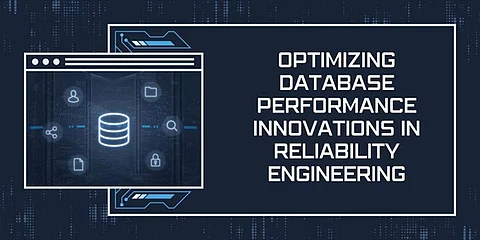

In this modern era, Shekhar Mishra emphasizes that businesses rely on databases for efficiency, customer experience, and decision-making. Growing data volumes and real-time processing demand advanced management strategies. Without optimization, slow queries, bottlenecks, and downtime impact operations. Database optimization uses automation, machine learning, and proactive monitoring to enhance response times, balance system load, and prevent degradation. Innovations in database reliability engineering improve uptime, cost efficiency, and resource allocation. As business operations become increasingly dependent on data-driven insights, maintaining database performance is crucial. Companies must continually refine their database strategies to keep up with evolving demands.
With databases handling vast transactions per second, optimization is more critical than ever. The shift to cloud-based, multi-tenant architectures has increased data demands. Organizations must manage diverse workloads and real-time analytics. Advanced strategies help maintain efficiency, ensuring seamless operations and user satisfaction. Managing these complex environments requires a holistic approach, integrating security, performance, and scalability considerations. Without such measures, performance issues can cascade, affecting business productivity and service reliability.
Indexing is key to database performance optimization. Techniques like selective indexing, B-tree structures, and bitmap indexing reduce query times by up to 87%. Prioritizing frequently accessed columns and optimizing index maintenance enhances storage efficiency and data retrieval speed, ensuring responsiveness and scalability. Implementing the right indexing strategies improves overall system efficiency and minimizes query bottlenecks. A well-optimized index structure significantly reduces the need for expensive full-table scans.
Partitioning helps manage large datasets by distributing workload efficiently. Horizontal partitioning reduces query response times by over 80% in databases exceeding five terabytes. Time-based partitioning optimizes temporal data analysis, improving query efficiency and preventing excessive scans, ensuring sustained performance. Effective partitioning also helps balance workload distribution, preventing performance bottlenecks under high transaction loads. Businesses that leverage partitioning strategies can maintain operational efficiency even as data scales.
Modern caching mechanisms reduce database load and improve response times. Multi-layered caching ensures fast data retrieval and decreases latency. Adaptive caching and write-through caching optimize hit rates, improving system resilience and reducing stress on primary databases. By reducing the frequency of database queries, caching allows applications to scale efficiently. Proper cache management ensures data consistency while keeping the system agile and responsive.
Automated monitoring systems analyze thousands of metrics per second, predicting slowdowns before they impact users. Predictive maintenance techniques proactively resolve bottlenecks and optimize resource allocation, enhancing uptime and cost efficiency. Organizations benefit from real-time insights, allowing them to fine-tune system performance dynamically. By identifying trends early, businesses can prevent disruptions and ensure smooth data operations.
AI-driven tuning dynamically adjusts execution plans, reducing query execution times by over 50% while maintaining stability. AI-based tuning adapts to workload changes, reducing manual database management and enhancing operational efficiency. These automated tuning solutions optimize resources, ensuring databases run at peak performance levels. As AI continues to advance, future tuning strategies will further refine query execution and resource allocation.
Machine learning optimizes query execution, resource allocation, and index management, improving performance by up to 40%. AI models balance workloads, preventing overload and enhancing database efficiency. Machine learning adoption drives self-optimizing database systems. As AI becomes more sophisticated, these intelligent models will improve decision-making processes and streamline database operations. The future of DBRE will rely heavily on AI-driven automation to minimize manual intervention.
It is DBRE that keeps changing and evolving with aspects of self-healing architectures, dynamic resource allocation, and AI-powered workload management. Edge computing eliminates latency, hence, optimizing real-time performance. AI-driven monitoring adaptive resource management ensure resilience and scalability. Investment in learning and automation strengthens the underpinning database infrastructure for long-term success. Progressive Organizations, which adopt such advancements in work processes, can enjoy competitive advantages in handling a complicated data world. Continuous improvement of database reliability engineering will be crucial for the businesses aiming to grow and innovate effectively.
The concluding, Shekhar Mishra observations highlight how a new DBRE is redefining the approach to database management. As ecosystems become increasingly complex, organizations should continue to realize enhancements in the field of automation as well as AI-based approaches for successful performance and reliability. Coupling predictive analytics, advanced indexing, and automation will dramatically advance performance, scalability, and reliability. There will be advancements in the areas of AI and automation that will further enhance the utility of the database in a data-driven world. More and more organizations will begin to rely on data to drive their decision-making processes; therefore, investment in optimizing database performance is likely to be a part of any strategic initiatives. Those organizations that opt for AI-driven optimization will be indeed better positioned to consume growing quantities of data efficiently.
